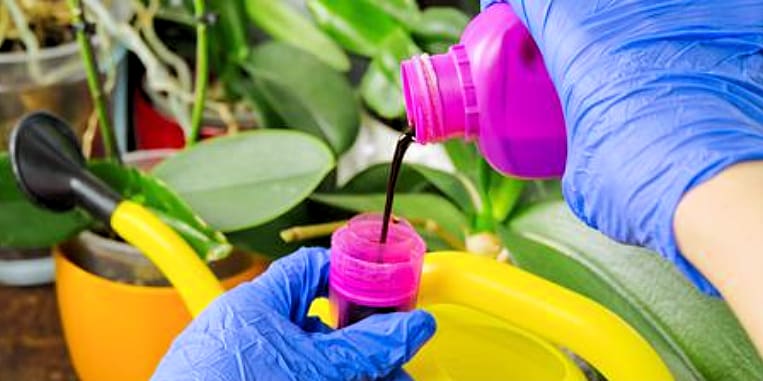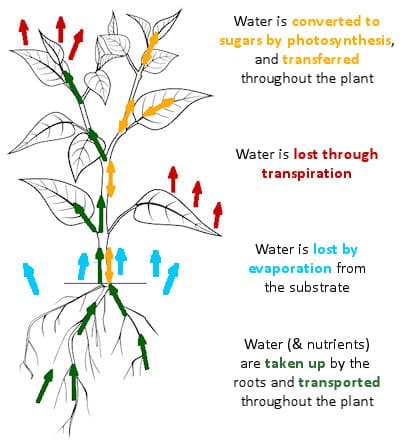
In the plant world, orchids are slow growers, so are quite undemanding of fertilizer. Despite that fact, one question I hear a lot is “How much do I feed my orchids?”.
There are a lot of things that go into an answer, such as fertilizer formula, the frequency of feeding, and the concentration of the solution. Let’s start by taking a glance at the science of plant growth.
The “building blocks” that make up about 90% of a plant are carbon (C), oxygen (O), hydrogen (H), and nitrogen (N). The first three come from water and air. For cultivated plants, the nitrogen comes from the fertilizer solutions we apply.
If we do the calculations for the chemical processes that result in “growth”, we find that for a plant to add a pound of living tissue, it must take up and process about 200 pounds (~91 kg) of water and only about 5 grams of nitrogen from fertilizer. So what does that mean in more practical terms?
Let’s say we expect a plant to add a pound of weight in a 10-year period – probably not a bad guess for a paphiopedilum that adds a new growth every nine to twelve months. That would mean the plant – on average – must absorb about 5 g ÷ 520 weeks = 0.0096 g (9.6 mg) of nitrogen and about 0.175 kg of water per week. If 100% of what we deliver is absorbed, that suggests the “ideal solution” for weekly feeding would be 9.6 mg ÷ 0.175 kg = 55mg/kg = 55 ppm N.
But wait! That does not mean that we should water with a 55 ppm N solution!
If the plant truly absorbed everything we apply to the pot and lost none of it through evaporation, that would be appropriate, but we really don’t know 1) how much of that applied solution is retained by the potting medium, or 2) how much of it is absorbed by the plant!
Potting media retention varies all over the map, from “sponges” like sphagnum and rock wool, to “ducks’ backs” like coarse Orchiata bark. Plus, as “retention” is the net of absorption and evaporation, there is even more variability, depending upon the local environment.

All in all, it is an extremely complex combination of events, so short of just giving up, what can we do? I think that the answer is to adjust your potting media and culture so that there is always a plentiful supply of water containing a tiny amount of fertilizer for the plant.
Using my preferred 25 ppm N solution as an example, that means that each gallon applied contains about 95 mg of nitrogen. If we pour a quart of that solution into a pot an average of twice a week, over our theoretical 10-year growth period, we will have delivered about 25 grams of nitrogen and 980 kg of water to the pot! That suggests that if the plant is able to take up roughly 20% of that, it’s right on target.
That might be a reasonable uptake efficiency in culture that maintains constant moisture at the root system, but it is probably a gross overestimate for most growers. For all of us, I think the best bet is to use a very open mix and irrigate with such a dilute solution more often – sort of like what happens in nature. I know from my own experimentation with plants in semi-hydropic culture, that plants watered daily gained about 25% more weight than those watered every two- or three days.